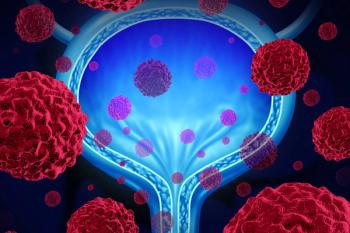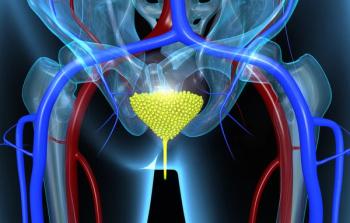
Gender Inequalities Exist in Diagnosis of Bladder, Renal Cancers
General practitioners took longer to suspect a diagnosis of bladder or renal cancer in women compared with men, according to a recent study.
General practitioners took longer to suspect a diagnosis of bladder or renal cancer in women compared with men, according to a
Large polypoid mass in the urinary bladder
“The average woman with bladder cancer survives for a shorter period after their diagnosis compared with the average man with bladder cancer,” Georgios Lyratzopoulos, MD, of Cambridge Centre for Health Services Research, told Cancer Network. “This is a puzzling type of gender disparity in survival that is unique to bladder cancer compared with all other cancers.”
Researchers suspect that differences in anatomy, but also in treatment and diagnosis may be responsible. To explore this further, Dr. Lyratzopoulos and colleagues conducted a prospective national survey of cancer diagnosis in the primary care setting. Data were collected from 1,170 general practices and included information on the number of pre-referral consultations and the amount of time between the first symptomatic presentation of a patient and referral to a specialist.
“Delays in diagnosis are a source of anxiety and regret by patients and their relatives,” Dr. Lyratzopoulos said. “Therefore improving the timeliness of diagnosis can help to improve patient experience, and, for some patients, it may also translate to better treatment and outcomes.”
Of the 920 patients with bladder cancer and 398 patients with renal cancer, 27% and 42% of them were women, respectively.
“We found that among patients who were subsequently diagnosed with bladder or kidney cancer, generalist doctors found it harder to appropriately suspect the diagnosis in women compared with men,” Dr. Lyratzopoulos said.
There was a higher incidence of three or more pre-referral visits among women than men for both bladder cancer (27% vs 11%; P <.001) and renal cancer (30% vs 18%; P = .025). In addition, women waited anywhere from 2 weeks to 2 months longer from presentation with symptoms to referral to a specialist compared with men.
Overall, women had a more than threefold higher odds of having three or more pre-referral visits for bladder cancer (OR = 3.29; 95% CI, 2.06–5.25; P < .001) and almost twofold higher odds for renal cancer (OR = 1.90; 95% CI, 1.06–3.42; P = .031).
“What was surprising is that this was the case even among patients who present with macroscopic hematuria, ie, doctors find it harder to appropriately suspect the diagnosis of urinary tract cancer in women, even when they present with an ‘obvious’ suspicious symptom, and in spite of clinical guidelines on the matter,” Dr. Lyratzopoulos added. “We believe this is the case because hematuria is indeed also possible symptom of urinary tract infection, and such infections are more common in women than men.”
The researchers estimated that of the about 6,000 women diagnosed with bladder or renal cancer each year in the United Kingdom, about 700 “experience three or more pre-referral consultations when they would have required only one or two had gender inequalities not been present.”
In addition, even when the most obvious symptom, hematuria, was present, 28% of women experienced gender inequalities, the researchers found.
“Implementing clinical guidelines rigorously will improve the speed of diagnosis for women with bladder and kidney cancer who present with hematuria,” Dr. Lyratzopoulos said. “However, we need to develop new tests and decision tools to help doctors to promptly diagnose those men or women, with either cancer, who present without hematuria-roughly this relates to one-fourth of patients with bladder cancer and three-fourths of patients with kidney cancer.”
Newsletter
Stay up to date on recent advances in the multidisciplinary approach to cancer.


















































































